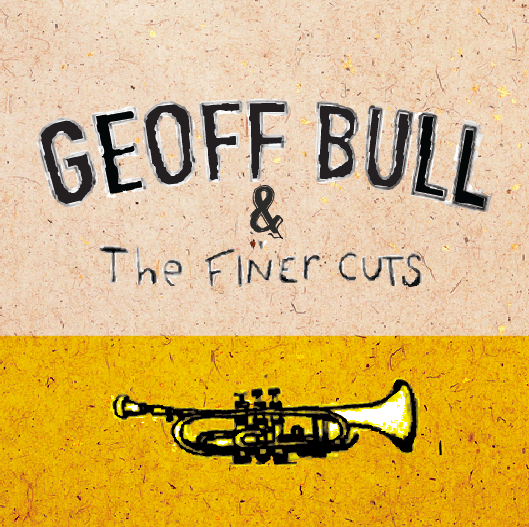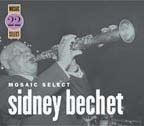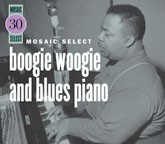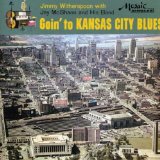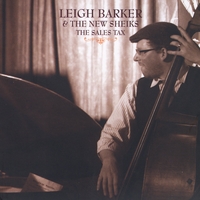One thing I don’t say to myself very often is “Gee, I wish I had another version of Jersey Bounce.”
I’ve really been enjoying the recent rash of smaller combos and knock-about street jazz type bands coming out of places like New Orleans and Seattle (bands like Smoking Time Jazz Club, and dancer-populated Careless Lovers.) There’s something about the DIY ethos of dancers learning to play instruments and then making the music they love dancing to. It’s exciting, as dancers move from just responding to and occupying music, to actually making it.
But I have to say, it’s a refreshing change to be presented with a big, solid band full of highly skilled, experienced musicians. And a band that’s well managed is a gem.
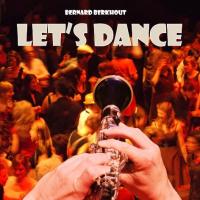
We’re all used to the sort of big bands that are hired to play at smaller exchanges and local events. They’re made up of a range of ring-ins and local musicians, pulled together for the night or a couple of gigs. We’ve seen all those faces before. The band leader is usually the guy who put the gig together, not the guy who drills the band each week in practice, who seeks out serious charts and arrangements, tailoring them for individual musicians. And most of these bands are less than inspiring for dancing or listening*. It’s not really surprising that dancers started getting interested in smaller, more dynamic bands.
Today, there simply isn’t enough work for more than three or four big bands (if you’re lucky) in a single (decent sized) Australian city. Even in 1920s Chicago,
the job, as South Side newspaper columnist and orchestra leader Dave Peyton insisted, created bands and held them together. Cabaret, dance hall, and vaudeville theater employment gave life to jazz groups:
The job makes the orchestra. If you lose the job and loaf a few weeks, you haven’t any band. Our field is a narrow one. Your men can’t afford to loaf long and the first bidder takes them away from you. The job is what you want to worship.
(Kenney, William Howland, Chicago Jazz: A cultural history, 1904-1930, Oxford University Press: New York, 1993, xii)
Even if your city is as large and creatively together as Sydney or Melbourne, you still see a lot of the same faces in each of the bands. And each of those guys in modern big bands is also working other projects, other musical styles, just to make a living. Jazz today is a catholic enterprise; there are lots of different styles, and 1930s/40s classic big band swing is just one of them. And you hear it in the big bands. Musicians’ styles and solos are influenced by a far wider range of music than in the original swing era, and while they might bring talent to a big band, there’s rarely the unity of style and focus in a modern big band that really makes them work as a living, breathing animal.
So Bernard Berkhout’s Orchestra’s Let’s Dance! recording is a pleasure.
I have to say, very clearly here, that I was sent a copy of this CD unsolicited. I often have reservations about reviewing bands’ CDs, especially in the swing dance world, as the pool is just too small for me to feel comfortable about reviewing things honestly. But I wasn’t asked to review the CD, I was just sent an email with the line
The CD is now out and I would like to send you a copy.
Awesome. I said “sure” and then I had a new CD. I win!
And I was bloody relieved to hear the actual music. I wasn’t going to have to make nice and fake some positive comments. This album is so fucking good. It’s a delight to hear a solid, tight big band pumping out the shit that made lindy hoppers lose their bits in the olden days. When the oldies talk about music, this is what they mean. Shit is hot. The sound quality is fabulous. The songs are all familiar, the arrangements are tight, the solos are nice, the rhythm section rocks.
I’d heard about this CD before through a thorough piece on its production and intentions on Hey Mr Jesse (ep 67), but also via the SwingDJs thread ‘Recording technique recommended for a new big band album’. I’d been interested in the community consultation that had gone into the album, and into the band. It’s an effective way of marketing a product: give people a feeling of ownership or participation, and they’re more likely to give a shit about the end product. Works with dance events, and it seems to work with CDs for dance bands. I had thought about buying the album, but having to buy a physical CD rather than downloads put me off. Buying in euros from Europe means a dodgy exchange rate and expensive shipping to Australia. So I’d put the album to the back of my mind, on my mental ‘to buy’ list for when I had a few more dollars in my DJing bank (though it’s only $AU20 including postage, which is pretty bloody decent). So a free copy was very welcome. I was curious. Also, I am a tightarse. And it’s very flattering to be sent stuff.
First off, the CD’s packaging is sweet. I don’t care much about this stuff usually (unless we’re talking Mosaic or Bear Family sets), mostly because I tend to rip the CD into my computer, then pack the physical CD away then forget about it. But this packaging is nice. It’s a cardboard case, which is great for shipping long distance. Jewel cases tend to arrive in pieces. Pieces that scratch the buggery out of the CD. And there’s a nice booklet listing all the musicians. Sweet.
To use an annoyingly overused phrase, the album does everything right. Songs are about three minutes. I’m finding dancers more and more tolerant of longer songs these days, probably because of their experience with live bands. But three minutes is a good length. Creating a good dance song in three minutes is a craft, like writing a short story. Get in, set it up, let it roll, finish it up with a bang. This shorter length means there’s less room for long, boring, wanky solos. Thank fuck. The solos in this album are concise, well-crafted and occasionally fucking GREAT. I dunno if they’re transcribed from original recordings (this whole album smacks of painstakingly accurate recreationism), and to be honest, I don’t much care. I’m here for the party, and I’ll think about the finer details later.
Most importantly for a lunk-head dancer like myself (and I am boringly lunkheaded when it comes to what I like for dancing), the band has a chunkingly solid rhythm section. It’s a machine, a power house pumping the band along. This is what a big band does right: four people shoveling the coal, stoking the boiler. A guitar, a piano, a drummer, a bass player, give or take one or two. This is what I really miss in smaller hot street-jazz type combos. I miss those four blokes laying down a good, chunky, layered rhythm.
These guys in Berkhout’s Orchestra give the rest of the band space to explore melody and solo, just getting on with their own job: holding shit together, telling even the newest dancer where the beat is. A good, solid rhythm section lets the rest of the band fuck about with fancy ways of adding/embellishing the swing, the delay that makes for excellent lindy hop.
You know how I know the rhythm section rocks? Because the sound quality is really nice. I don’t know how this was recorded, but I do know it’s nice. Good enough for me. I know it’s cool and interesting to try to recreate the exact same studio and mic set up and whatever from 1920s and 30s recordings. That’s great. Particularly if you’re listening to a CD at home on a decent sound system or good headphones. You can just sit there and soak in every echoey clunk, you can strain your ears trying to find the individual strum of the guitar or clarinetist drawing breath. Less excellent, though, is that sort of action when you’re dancing in an echoey town hall, heart pounding in your ears, trying to keep yourself and your partner safe, surrounded by two hundred people dancing in and out of time. And I’m a DJ. I’m looking for recorded music that works in shithouse conditions.
I’m usually DJing on shitty sound gear. Mishandled set ups in dirty pubs. Inadequate self-powered speakers in echoing church halls. Sure, things can be better at exchanges, but the bulk of my DJing happens in my home town in less than perfect conditions. So I need the best sound quality I can get. Because I’m then going to squeeze that brilliant sound through my shithouse laptop soundcard, down a raggedy RCA cable and into a mixer I don’t really know how to use.
To be honest, I’m completely over bands who are so into recreationism they eschew the awesomeness of modern technology. It seems kind of pointless. You think Jelly Roll Morton would have settled for dodgy sound when he could have heard himself played back in glorious stereo wonderment? If King Oliver or Genny Goodman or other band leaders of that day had had access to the sound technology we have today, you can bet your bottom dollar they’d be using it. They’d be wanting their music to sound as GOOD as possible.
I also find the recreationism that uses olden days tech so obsessively a little culturally naive. There were all sorts of politics going on in the recording industry in the swing era, and the whitest, most popular and palatable bands got access to the best technology and promotion. So those shitty recordings by black artists doing the most provocative, progressive music at the time were the result of shithouse social politics and economics. Recreating that is a bit like recreating bullshit racist dance sequences from films. You’re kind of missing the point.
Do justice to this magic. Do your best playing, and use your best technology.
Berkhout’s producers have done a pretty good job on this.
But I’m a DJ. Just because I love a song or an album, doesn’t mean this is going to be good DJing fodder. So I took this album to my most challenging gig. It’s a fortnightly dance in a large, echoey hall with a bullshitly inadequate sound system. The dancers are mostly new, even complete first-class beginners, and I usually do the first set of the night after the drop-in casual class. There are some more experienced dancers coming along, but this is a mixed crowd, and they don’t really have much time for shit DJing. If the DJ is rubbish, they walk up to Newtown’s main street full of bars and cafes. I find anything lo-fi just disappears into the high ceiling at this venue, and ends up sounding like shit. So I tend to DJ hi-fi and new bands almost exclusively there. Because I am chicken shit.
So I put this CD to the set in that setting. If it could work here, it could work anywhere.
I did my best to set it up properly. I think new music deserves that. So I started with some Big 18, a bit of Gordon Webster (current flavour of the month), some Mora’s Modern Rhythmists, and then it was time to bust out ‘Jersey Bounce’. Instant success. The floor was PACKED. Even the most jaded, heard-it-all-before experienced dancers were up and working it. Yes, we’ve all heard ‘Jersey Bounce’ a million times before, we know every note. We’ve heard every version. But this one is just fucking GREAT. WIN!
I played a few other modern bands in that set, from small to large, from New Orleans to New York. I also played ‘St Louis Blues’ from the Berkout CD, and it went down just as well. This isn’t always the most successful song with lindy hoppers. The tempo and rhythm changes often confuse new dancers. Not this night. WIN!
To be honest, if I’d thought I could have gotten away with it, I’d have played the entire CD, song after song. But there were a handful of other DJs in the room, DJs who’d pick up on that sort of stunt. And I have a rep to protect.
In future, though, this CD is going to be on my go-to list. When I need something solidly swinging and absolutely brilliant for solid lindy hop to introduce the music to beginners, this is on the short list. When I need a hi-fi recording to cope with a difficult sound set up, this is what I’m going to play. When I need a high energy, pumping song to kick a jam into gear, this is going to cut it.
I have been shamelessly pimping this album to all the DJs I know. It’s also an album I’ll recommend to new dancers or people looking for an easy entry point to classic swing.
I could conceivably get tired of this album in the near future. But not before I’ve played it so many times dancers audibly groan when they hear the first two notes of the song.
Yes, you do need another version of ‘Jersey Bounce’. Buy this CD.
* There are exceptions, plenty of them are American and well known with dancers. In Australia, the JW Swing Orchestra, for example, particularly around 2002, specialised in Benny Goodman arrangements, practiced regularly and was seriously tight. The Ozcats here in Sydney are a fully sick Bob Crosby tribute band, but they’re really not a hardcore swing era big band like Benny Goodman’s. Still, the Ozcats is made up of some of Australia’s tightest, most professional and experienced musicians. Who’ve been doing this thing for a looong time. And of course, bands like Melbourne’s Red Hot Rhythmakers are fully sick.
